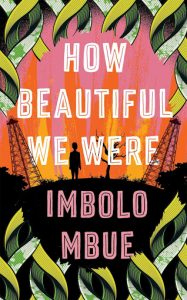Sunita NarainHydropower is important. But how important? Is it important enough to
dry up stretches of our rivers? Or is there a way to balance the need of
energy with the imperative of a flowing, healthy river? I have been
grappling with these issues for the past few months. But now that the
committee (of which I was a member) on the hydropower projects on the
Ganga has submitted its report, let me explain how I see the way ahead.The Ganga in the upper reaches has been an engineer’s playground. The
Central Electricity Authority and the Uttarakhand power department have
estimated the river’s hydroelectric potential at some 9,000 MW and
planned 70-odd projects on its tributaries. Their dreams are gargantuan.
In building these projects the key tributaries would be modified—through
diversion to tunnels or reservoirs—to such an extent that 80 per cent of
the Bhagirathi and 65 per cent of the Alaknanda could be “affected”. As
much as 90 per cent of the other smaller tributaries could be “affected”
in the same way.
In this way, hydropower would re-engineer the Ganga. It would also dry
up the river in many stretches. Most of the proposed projects are
run-of-the-river schemes, which are seemingly benevolent as compared to
large dams. But only if the project is carefully crafted to ensure that
the river remains a river and does not turn into an engineered drain.
On the Ganga, many projects were planned and were being built so that one
project would divert water from the river, channel it to where energy
would be generated and then discharge it back into the river. But the
next project would be built even before the river could regain its flow.
So, the river would simply dry up over entire stretches. Energy
generation was the driver; indeed, the only obsession. The plan was
based on using up all the water in the dry season to make energy. The
river would have died.
In the committee we discussed various options for ecological flow
(e-flow)—why and how much water should be left in the river for needs
other than energy. The hydropower engineers argued for 10 per cent
e-flow, which they said they could “accommodate” in project design
without huge loss of energy generation. The Wildlife Institute of India,
commissioned to look at ecosystem and fish biodiversity needs, suggested
between 20 per cent and 30 per cent e-flow in different seasons.
I said this was inadequate. In most stretches, the lean flow (from
November to April) was less than 10 per cent of the high monsoon flow.
Leaving just 30 per cent would mean a trickle. It was not acceptable. I
proposed 50 per cent e-flow at all times. But clearly, this was
completely and absolutely unacceptable to the other side.
My colleagues at Centre for Science and Environment decided to do some
number crunching. The committee had been provided, on repeated requests,
hydrological data of 24 constructed and proposed projects. My colleagues
took this data and analysed what would be the impact on energy
generation and tariff in different e-flow regimes. They found that in
the 50 per cent e-flow scenario there was substantial impact on the
amount of energy generated and, therefore, on the tariff. But if we
modified this a little and provided for a little extra water for energy
generation in the high discharge season, but kept the 50 per cent e-flow
for the lean season, the results changed dramatically. In this case, the
reduction in energy generation was not substantial. Therefore, tariffs
were comparable. The reason was simple: the projects actually did not
generate much energy in the lean season. The plant load factor, project
after project, showed that even in the unrestricted scenario (e-flow of
10 per cent or less) there was no water to make energy in the lean
season. We suggested that mimicking river flow was the best way to
optimise energy generation. The river had enough to give us but only if
we put the river first, our needs next.
Based on this, our proposal was
to provide 30 per cent e-flow for six months (May to October) and 50 per
cent for six months (November to April). But as expected, this analysis
did not suit the power interests. IIT-Roorkee, also a member of the
committee, was asked to review the analysis.
The games started. IIT-Roorkee, represented by its Alternative Hydro
Energy Centre, disputed our conclusions. We asked why? No data was
provided on the method of estimation. But hidden in the background
sheets provided by IIT-Roorkee was data from two projects of
hydrological flow used to disprove our figures. We checked. We found to
our shock that figures of flow had been modified; suddenly there was no
water in the river in the first place, so a higher e-flow regime would
naturally mean lower energy generation. We checked again. We found that
even levelised tariff figures had been “changed” from what was provided
earlier to the committee.
A round of data contest began. In my next article, I will tell you how
the matter was resolved (or not). But let me leave you with this
thought: rivers should not be trained; it’s Indian water and hydropower
engineers who need re-training.
(Sunita Narain is the Editor of the Down To Earth magazine published by the Centre for Science and Environment, New Delhi. This editorial has been published in the latest issue of the CSE news bulletin.)




